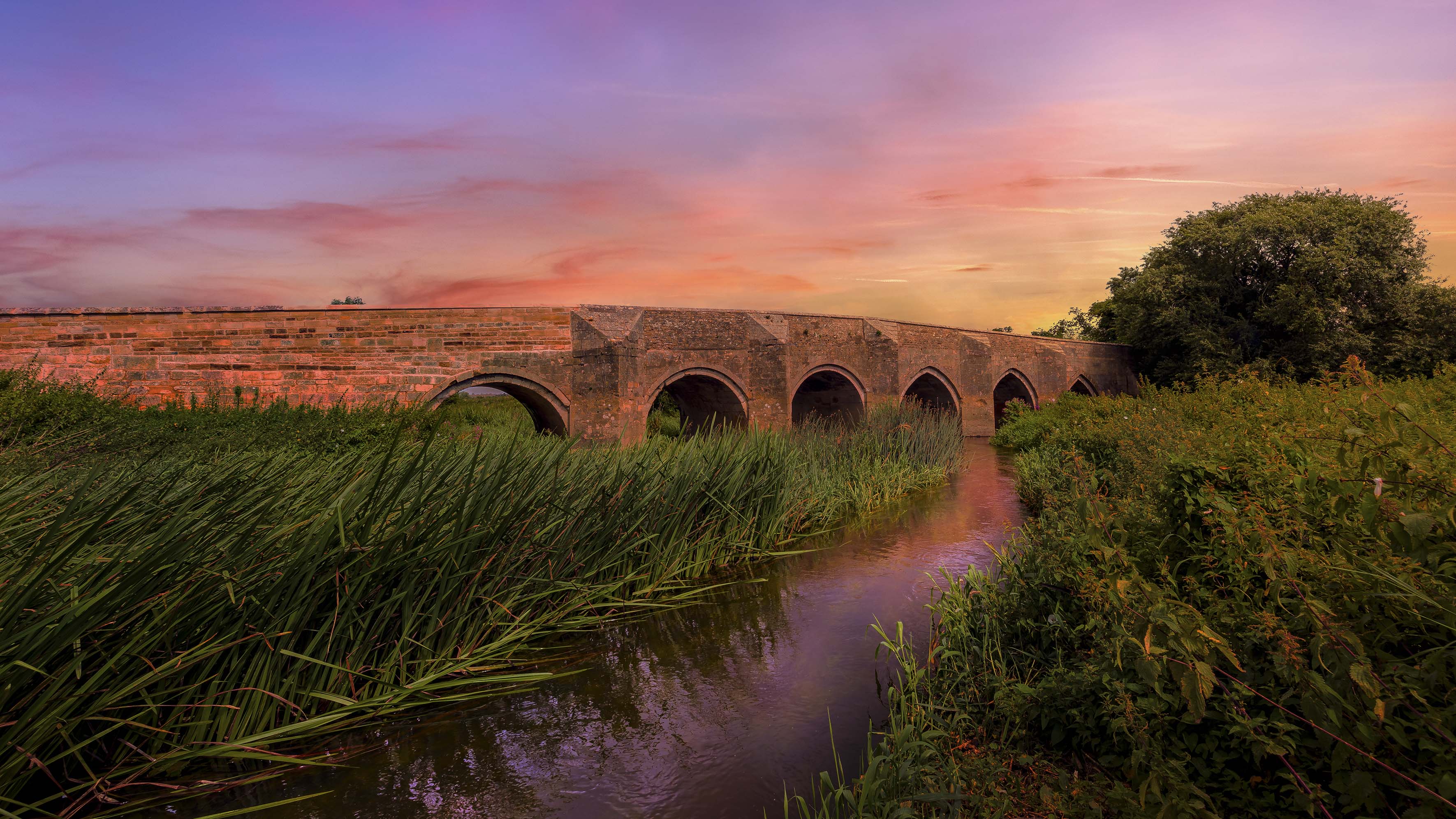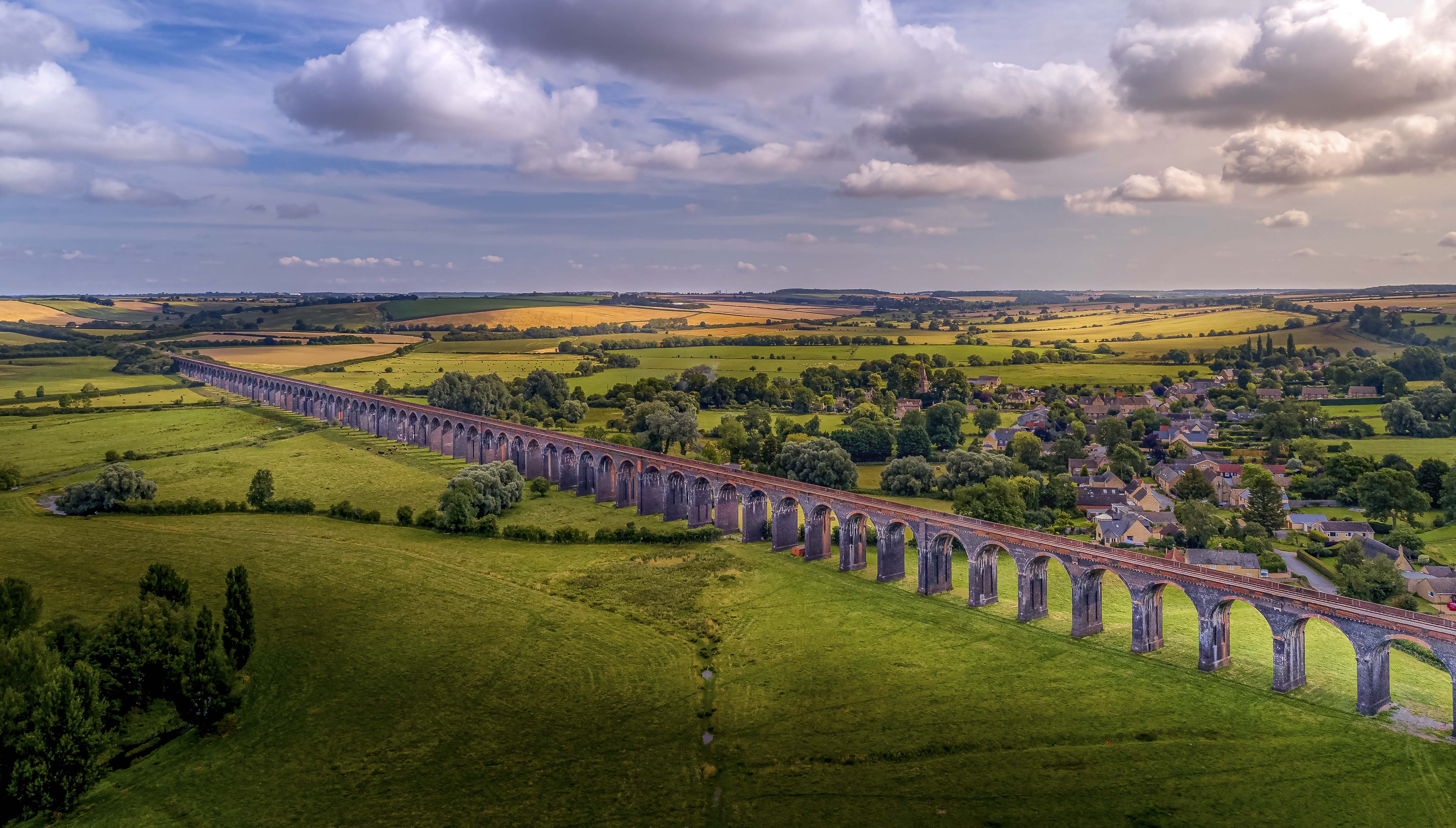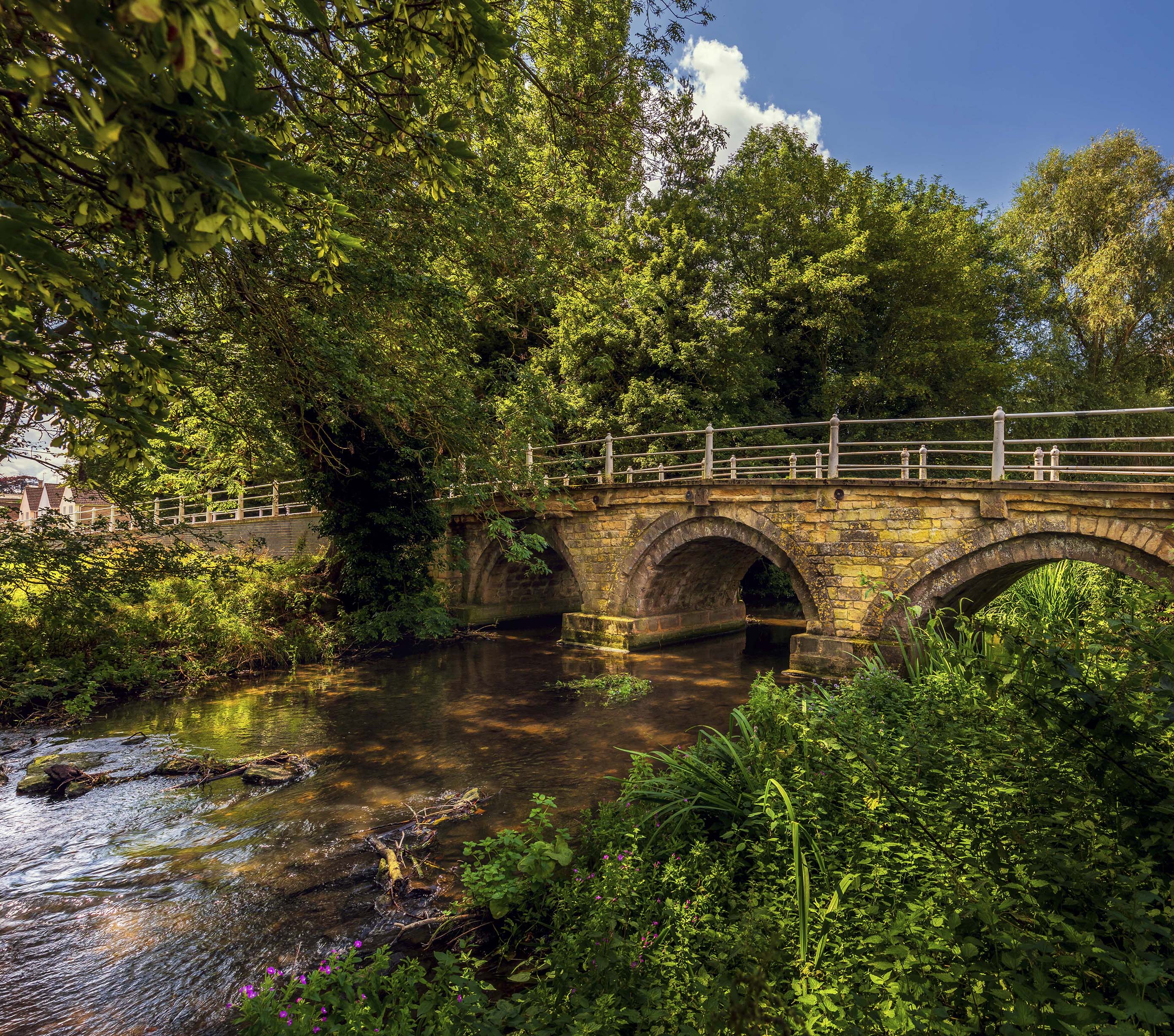
Rutland’s Best Bridges
The Welland Viaduct

The Welland Viaduct is 1,275 yards (1,166 km) long and has 82 arches, each with a 40 feet (12 m) span. It is the longest masonry viaduct across a valley in the United Kingdom.
Constructing it today would prompt admiration but the structure, created by the Lucas and Aird Contract Agency for the Midland Railway, was built from 1876 when the first of 30,000,000 bricks were laid, alongside the use of 20,000 cubic yards of concrete and 19,000 cubic feet of stone.
Back then the structure cost £12,000, and though that’s a modest figure today, the structure cost the equivalent of £14m in today’s money. The structure was celebrated in 1990 when it gained a Grade II listing.
Over 3,000 navvies possessed little more than gunpowder, shovels and picks to create the viaduct. Given that the village’s population at the time was only 300 or so, the area’s population swelled dramatically, with around 50 wooden huts popping up at the Northern end of the structure to accommodate the navvies.
Each of the huts accommodated seven men, two women and three children, with about 30 gallons of beer being consumed per hut each week – the equivalent of about five pints a day, per man. Evidently then, creating the viaduct was thirsty work.
Most of the bricks were manufactured and fired on site, men would shovel around 20 tonnes of earth a day and work 12 hour shifts to do so. The viaduct was originally opened as a passenger route in 1880, and accommodated eight trains a day – four in each direction – providing a more direct connection to London.
In 1885 a new high speed service entered operation, known as the Slip Coach, with fast trains to London, Northampton, Cambridge and the Eastern Counties via Kettering.
By the turn of the century, over a dozen trains were crossing the viaduct daily. The First World War saw the viaduct narrowly escape destruction by a German Zeppelin. The north embankment of the viaduct was damaged and subsequently collapsed.
The IRA in 1939 also threatened to destroy the viaduct, result in the area being placed under guard. The Beeching cuts in 1967 saw the bridge losing all passenger service traffic, with the line remaining open for freight only. A restoration in 2001 cost £1.5m and sought to secure the structure from 25-tonne axle trains travelling up to 60mph.
Ryhall Bridge

Ryhall Street Bridge gained its Grade II listing in 1961, and was created sometime in the 17th century from squared stone and ashlar. It has three ornate semi-circular arches and pointed cutwaters to the western side.
Wakerly Bridge

A 14th century five arch bridge over the Welland, Wakerly was widened by 2 ft in 1793. It is 81 ft (25 m) long. There is a carved head above the keystone of the second arch from the north and the bridge was restored by Rutland County Council in October 2018.
Specialist stonemason, Jason Henfrey, was commissioned to undertake the repair work. Aptly known as ‘Jason the Mason,’ he has decades of experience with a specialism in historic structures. His most notable project to date was the conversion of Hellifield Peel Castle near Skipton, North Yorkshire in 2007 into a domestic dwelling, which was featured on the TV programme Grand Designs.






